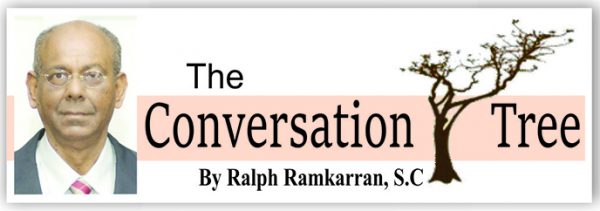
The United Nations has more experience than any other international agency in the study, measurement and eradication of poverty. It has embarked on the Third United Nations Decade for the Eradication of Poverty (2018-2027), having completed a first and a second decade. In its recent reports tracking poverty rates, the UN has used earnings of below US$1.90 per day as the basis of measuring poverty. Those living on less than US$1.90 per day are considered as living below the poverty line. Numerous measures have been discussed and debated over decades to lift people above the poverty line, and prior to the Covid-19 pandemic, great successes had been achieved in reducing poverty.
In 1997 Guyana began to obtain debt relief under the Highly Indebted Poor Country Relief Initiative (HIPC). To qualify for the Enhanced HIPC Initiative in 2001 Guyana was required to develop a Poverty Reduction Strategy. The Poverty Reduction Strategy paper (PRSP) of 2000 rested on seven pillars: broad-based job generating economic growth; stronger institutional and governance framework; investment in human capital, emphasizing basic education and housing; investment in growth-supporting infrastructure i. e. roads, power and irrigation; improved safety nets; and special intervention programmes addressing regional disparities in poverty incidence; investment to support services in water, sanitation and health. The PRSP stated that in 1999, 35 percent of the population were living below the poverty line and 19 percent were living in conditions of extreme poverty.
The poverty reduction strategy was reviewed by a PRSP Poverty Reduction Progress Report in 2005 by the IMF. It recorded that in 1988 the Boyd Report found that 65 percent of the population lived below the poverty line. In 1993 the World Bank set the figure at 43 percent. In 1999 the UNDP placed the population under absolute poverty at 38 percent. The PRSP Report 2011-2015 stated that in 2006, 36 percent of the population lived in moderate poverty while 19 percent lived in extreme poverty.
Measured by recent World Bank standards a different and confusing picture emerges about poverty. Its recent report states: “Poverty in Guyana, measured using the upper-middle income poverty line (US$5.50 per day in 2011 PPP) has dropped from close to 61 percent in 2006 to around 48 percent in 2019, but was still among the highest in the Latin America and Caribbean (LAC) region. “The conclusion from this statement is that in 2019, 48 percent of the population was living below the upper middle class poverty line.” This new threshold of US$5.50 to measure poverty suggests that those earning the minimum wage is $60,000 per month or $2,000 per day (US$2) would be living far below the poverty line. Measured on the same basis as the 2006 figure, poverty would be far below the 2006 figure of 36 percent with 19 percent in extreme poverty.
The Hoyte Government’s Economic Recovery Programme (ERP) in the second half of the 1980s which aggravated already high poverty rates by floating the currency, restricting government spending and generating extensive retrenchment, eventually resulted in efforts at poverty reduction at the tail end of the government’s life in 1991 through SIMAP (Social Impact Amelioration Programme). The poverty reduction efforts continued in budgets after 1992 but especially after the HIPC made it mandatory for poverty reduction budgeting.
In the meantime the United Nations had begun to highlight poverty reduction in increasingly substantial ways through its First, Second and Third Decades for the Eradication of Poverty and the establishment of the Millennium Development Goals. Guided by these initiatives, Governments of Guyana have had at the forefront of their economic agendas the reduction of poverty and national budgets have invariably reflected this goal. The failure, until recently, to transform our economy from its basic colonial structure as a primary producer of sugar, rice, timber, bauxite and gold has been the greatest obstacle to poverty reduction. The situation is now different. By any standards, the 2023 budget is a poverty-busting one by all the main criteria that are available to judge budgets.
In an article entitled “The Top 12 Solutions To Cut Poverty in the United States” dated June 30, 2021, Arothi Pathac and Kyle Ros set out the following measures: “1. Expand safety net programs to benefit all in need; 2. Create good-paying jobs that meet family needs; 3. Raise the minimum wage to ensure economic stability for all; 4. Provide permanent paid family and medical leave and paid sick days; 5. Increase worker power to rebalance the labor market; 6. Make permanent increases to the child tax credit and earned income tax credit; 7. Support pay equity to create a fair labor market; 8. Invest in affordable, high-quality child care and early childhood education; 9. Expand access to health care; 10. Reform the criminal justice system and enact policies that support successful reentry; 11. Invest in affordable, accessible housing; 12. Modernize the Supplemental Security Insurance program.” These are standard measures for a developed economy, but some coincide for one such as Guyana’s. But Guyana’s Budget certainly reflects these aspirations.
(This column is reproduced with
permission from Ralph Ramkarran’s blog, www.conversationstree.gy)





